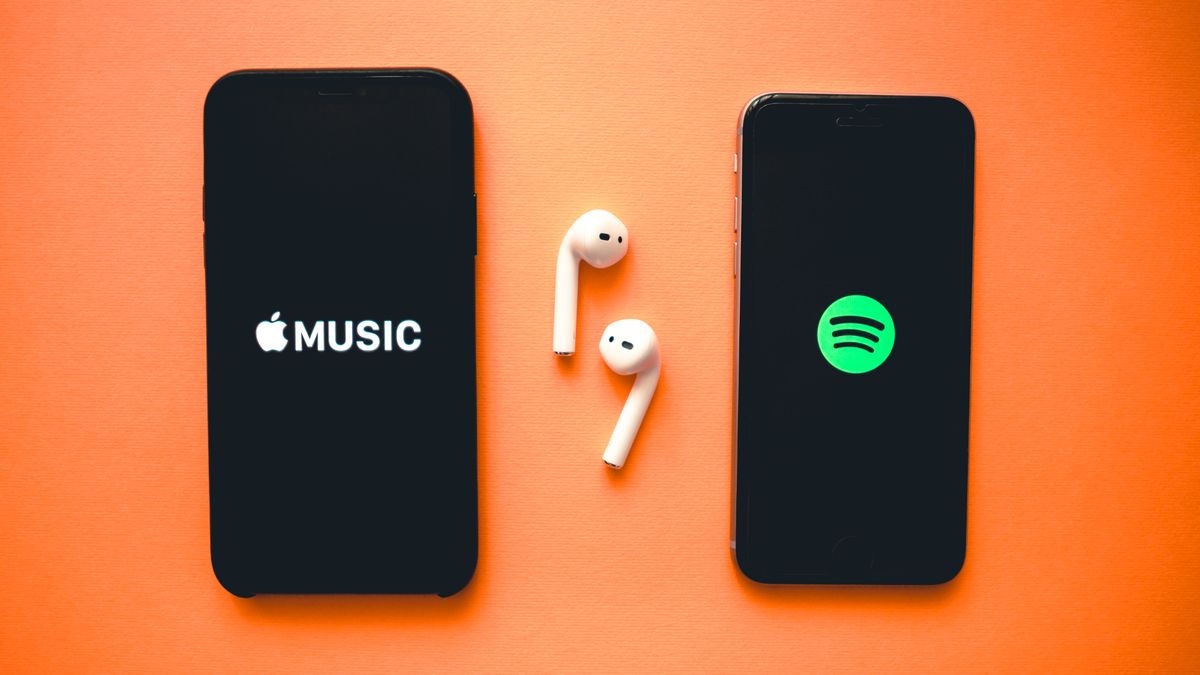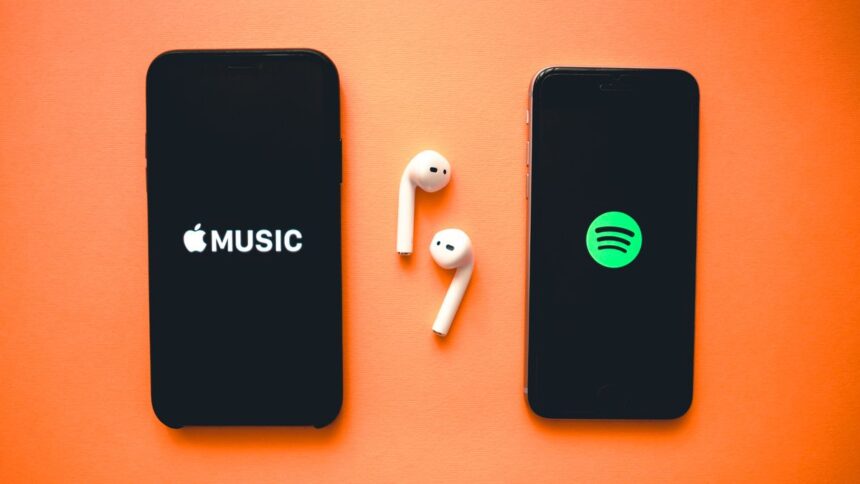As a Fitness Editor, I spend a lot of my time experimenting with workout apps, trying out exercise headphones, and doing a mix of high-intensity workouts and low-impact walks. I have an iPhone and a Mac, so naturally, I use Apple Music to stream music. But it was not always like this.
I resisted streaming services for years, preferring the security of using my local music library full of imported tracks from obscure CDs and songs I bought on Bandcamp. But finally, I decided to sign up for Spotify to listen to new releases before purchasing them.
I started to like the personalized playlists and easy access to such a large and diverse music collection. But when the app shifted its focus back to podcasts, I found it very difficult to find what I was looking for. This was especially true when looking for a good workout playlist.
So, I switched to Apple Music once I realized I could upload my music library using iTunes Match (yes, the name is confusing because iTunes doesn’t exist anymore). Apple knows more about my preferences than I do, so I was hoping to find great playlists to add music to my workouts, but it didn’t work out that way. This is what happened instead.

Apple Music doesn’t always understand me
Apple Music has a cleaner interface, lets me switch between loaded library tracks and streamed playlists, and generally understands what I like much better. But not when I want to exercise since Apple doesn’t customize its workout playlists.
Instead, themed workout playlists, grouped by genre or workout style, are the same for everyone. So when I open Metal Workout, for example, I see the same selection of newly released tracks and timeless classics as anyone else, even though Apple has a wealth of data about what I listen to and when.
It’s hard to understand why Apple doesn’t use its library of preferences data to personalize playlists, especially since it does a great job of this elsewhere. I even ditched manual playlists on my phone because the auto-generated James Frew station is so good.
And since I use iTunes Match, Apple has a catalog of every song I own and how often I listen to it. It’s surprising that despite having three detailed data sources, I can’t seem to find a way to generate personalized workout playlists tailored to my interests.
Of course, this may all change later this year when Apple introduces its new AI tools in iOS 18. I’d love for my iPhone to be able to understand context; So if I open a workout app, Music will know I’m about to workout and start playing a custom fitness-focused playlist. Maybe one day.
Single playlists not working
The Metal Workout playlist includes Slipknot’s Duality, which is great for getting excited, but I don’t get the same effect from the demo version of Metallica’s Enter Sandman. If you do, great, but this one-size-fits-all approach doesn’t seem to fit a highly customized streaming app.
Meanwhile, Spotify has a much larger collection of workout-themed playlists, recently introduced the ability to create the perfect playlist from a text message using AI, and there are many more public playlists created by other users that you can add to your library.
The main disadvantage of Apple’s approach is that a single playlist will never please everyone. You may like a certain song and be completely turned off by another. I prefer to train to songs that maintain a similar pace and intensity throughout, so I need to skip tracks that don’t fit that format.
It’s not that they are bad songs (I enjoy many of them), but they are not suitable for my training. And that is the problem. To be fair, I’m not sure any streaming service has completely solved this, but it seems like Apple is starting to fall behind compared to the new features Spotify has rolled out in recent months.
Spotify has many more options
Whatever my thoughts, Spotify is the default music streaming app for most people, which is why yoga teachers, personal trainers, and fitness instructors often create custom playlists for their classes or clients You can also find it on Spotify.
They are usually designed specifically for your session, and many coaches and instructors adjust the running order so the pace fits the flow of the class, building to a crescendo before slowing the pace for you to cool down and recover.
Likewise, brands like Peloton add class-specific playlists to Spotify, so when I had the chance to try Peloton’s latest dance class with Defected Records, I loaded up the playlist on the way home, listened again to all the tracks, but then I had to manually add them to my Apple Music library.
User-generated playlists are particularly useful, as you’re likely to find something that matches (or at least resembles) what you’d like to listen to. And then you can just copy the tracks to a new list, add a few others and that’s it.
Apple Music works well with Apple Fitness Plus
Being Apple, Music integrates well with other Apple services. For example, if you’re an Apple Music subscriber, exclusive podcasts and radio shows will appear in the Apple Podcasts app. And the company takes the same approach with its workout app, Apple Fitness Plus.
These two apps work well together, so if you take a Fitness Plus class, all the music appears with a link to the corresponding Apple Music playlist. And you can choose sessions specific to their music, with workouts to celebrate album anniversaries or Super Bowl halftime shows.
It’s a much more organized and easy-to-use system than Spotify, which typically relies on hand-curated playlists from brands or communities for specific workouts. But to use this feature, you’ll need to subscribe to Apple Music and get an Apple Fitness Plus membership for $9.99 a month.
I liked this integration when I used Apple Fitness Plus, but since I reviewed a lot of different apps, I haven’t maintained my subscription. However, it would be great to see Apple implement this beyond its platforms. Especially since some apps, like Centr, have dedicated Apple Music playlists that could be integrated into the app.
Apple Music or Spotify: which one wins for exercising?
Having used both apps, I prefer Apple Music’s interface, custom playlists, and higher artist payouts compared to Spotify. That doesn’t mean it’s perfect. I wish Apple would use all the data it collects about my preferences to create personalized workout playlists.
Especially since it is very good in other areas of the application. My station has become a daily staple, combining my favorite songs with new tracks I can enjoy, but Spotify simply has more options when it comes to fitness-focused playlists.
Additionally, Spotify has started implementing AI-generated playlists, so it’s possible to create the perfect workout soundtrack to suit your mood and workout in just a few seconds. But I still prefer Apple Music and will stick with it, even if it means taking an extra break to manually change tracks in the middle of a workout.
Keynote USA News
For Latest Apple News. Follow @Keynote USA News on Twitter Or Google News.





